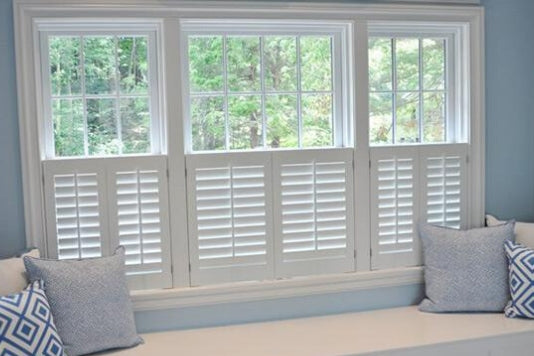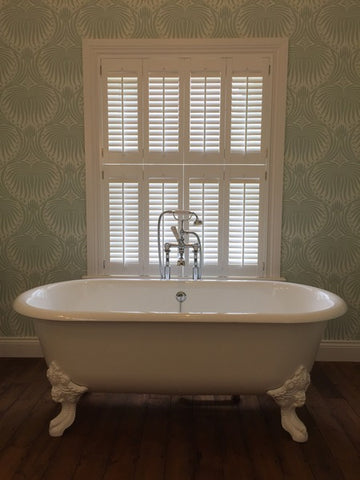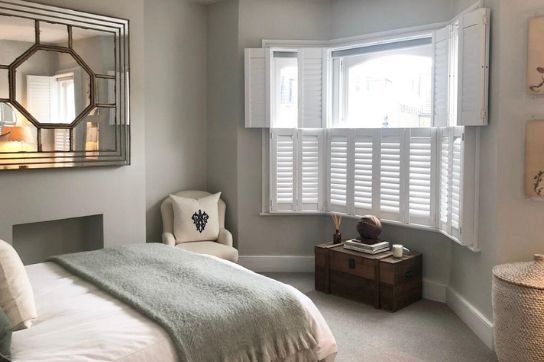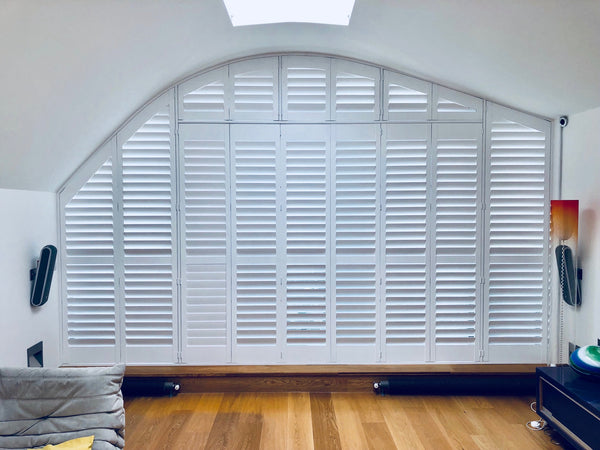Important factors to consider when choosing your Shutters Posted on 1 Jun 13:02 , 0 comments
Our Director Ben answered some great questions for Sheer Luxe the online lifestyle magazine on their informative interiors feature “7 things to consider before choosing shutters”
You can use them all over your house

Shutters are hugely versatile, and if designed correctly, they can complement any room. “Often, they’re used in street-facing windows because, as well as looking great internally, they also add a level of privacy and security from the outside world,” says Ben Kelly, director at The Shutter Shop. They also offer a chance to showcase original features in a period property.
There are different materials to weigh up
Shutters can be made from a variety of hardwoods, plastic, polymers or MDF. Each have different properties so, depending on the environment, different materials are better suited. “Rooms with high moisture or wet rooms should use a full waterproof shutter,” adds Ben.

“If the window is particularly large, then a hardwood (which is lighter weight) provides better longevity. MDF is probably the most popular material in the UK because it’s low cost. Improvements in manufacturing technology and using a hardwood core in the shutter can also strengthen the panel and allows them to be used on most windows.”
You can go full height or half height
“Often curtains or blinds might be used in conjunction with half height or café style shutters, as they works well together. Full height or tier on tier might be better suited to bedrooms without the need for any other window dressings,” suggests Ben.
Function is as important as form

Always think about how you intend to use your shutters, advises Ben. “Are the panels going to be closed the majority of the time with the louvres used to adjust the light? If so, you might prefer to use a wider panel (or panels) on the window as the width of the panel opening becomes less of a consideration. If you plan on opening the panels frequently, then you may look to bi-fold them to open away from the window. First, you will need to look at the space you have around the window, and consider a narrower shutter panel width so the panels take up less space in the recess or surrounds of the window when they are open and folded back.” For aesthetic appeal from the outside, try and keep shutter panel width consistent across windows, particularly on the same elevation, and also ensure the number of panels and breaks in the panels line up with the natural breaks in the windows.
You’ll need to think about curtains

Curtains and shutters and blinds and shutters can work really well together, you just need to make sure that they compliment each other, practically. “They work best together with the shutter panels closed (using the louvers for light) and curtains to soften the look or even just as dress curtains,” advises Ben.
Other things to watch out for…
Certain windows suit shutters better than others – for instance, inward-opening windows or those with sloping ceilings nearby may limit how they can be used, but there's usually a way to make it work. “Shutters are often the best or only solution for shaped windows as complex bespoke shapes can be created to mirror and compliment the window and the surrounding architecture,” Ben explains. “They can frame the window rather than hiding it.”
For the full article check out Sheer Luxe - “7 things to consider before choosing shutters”
